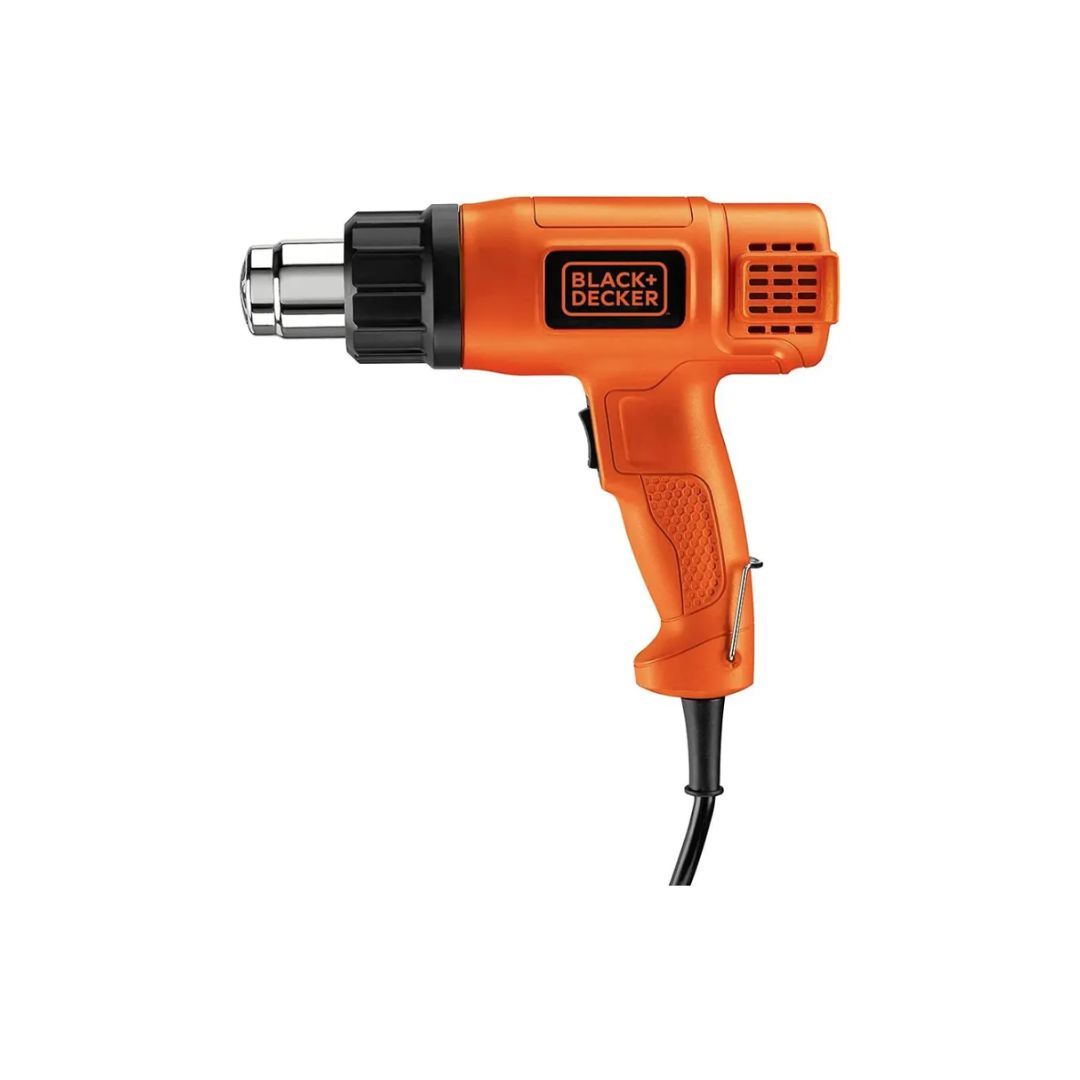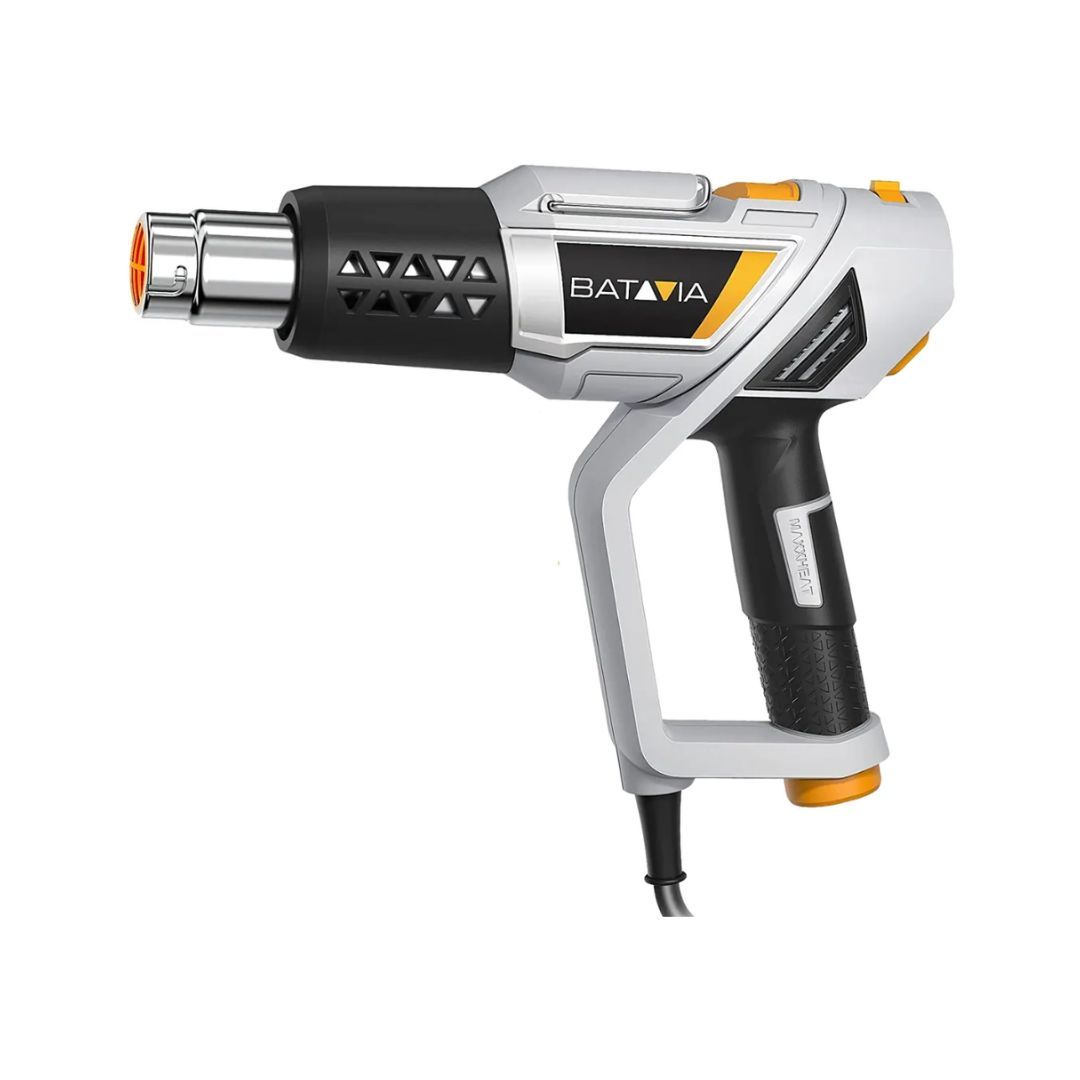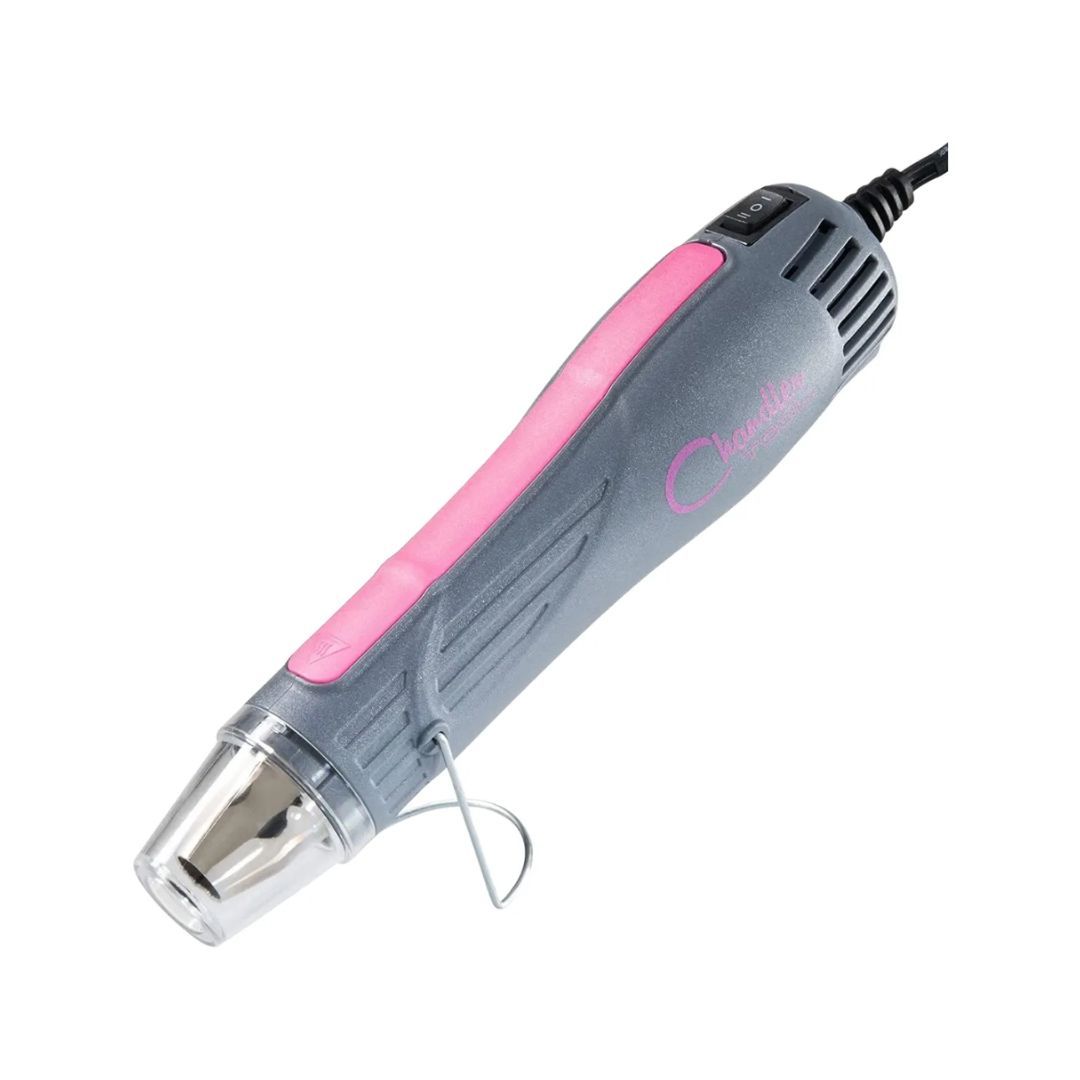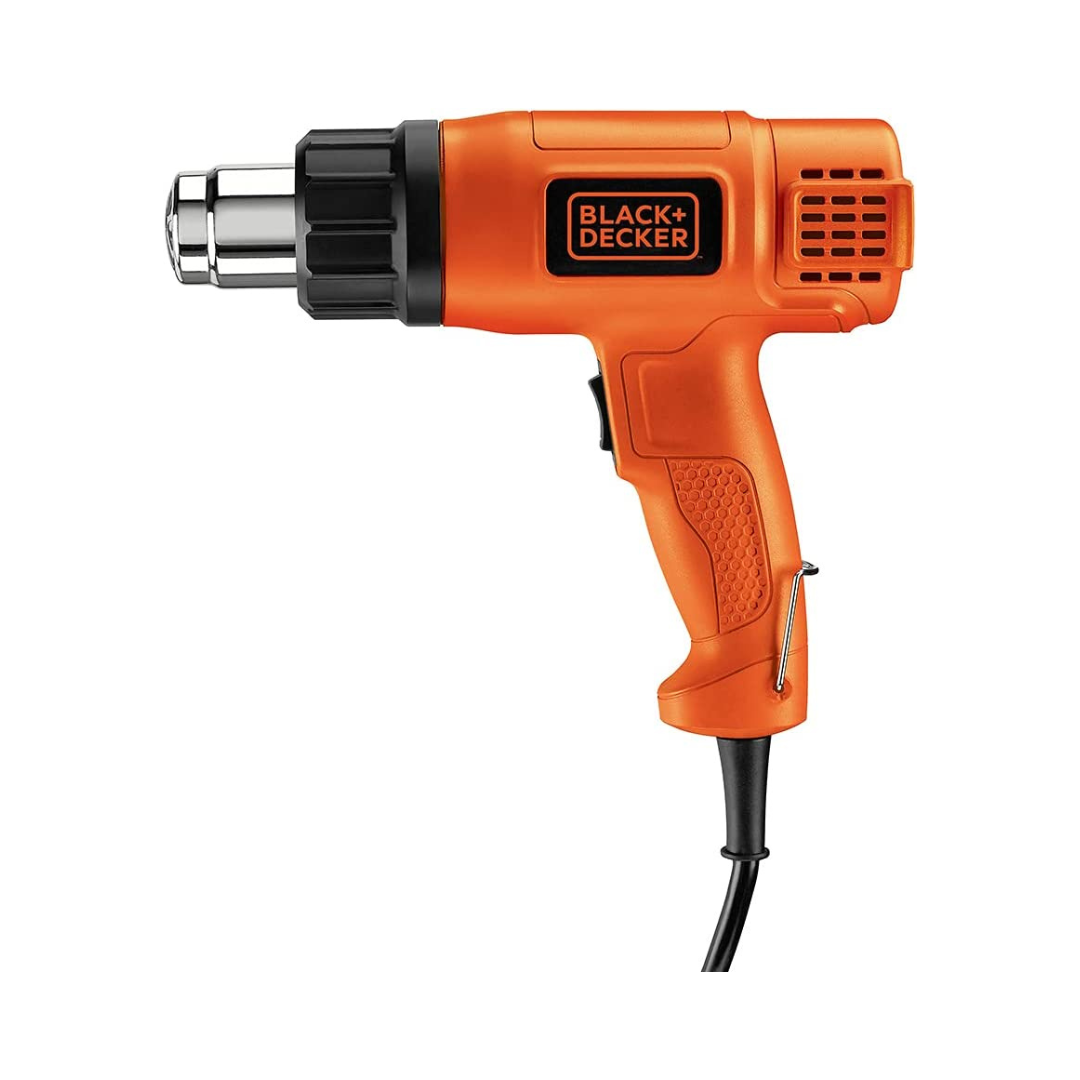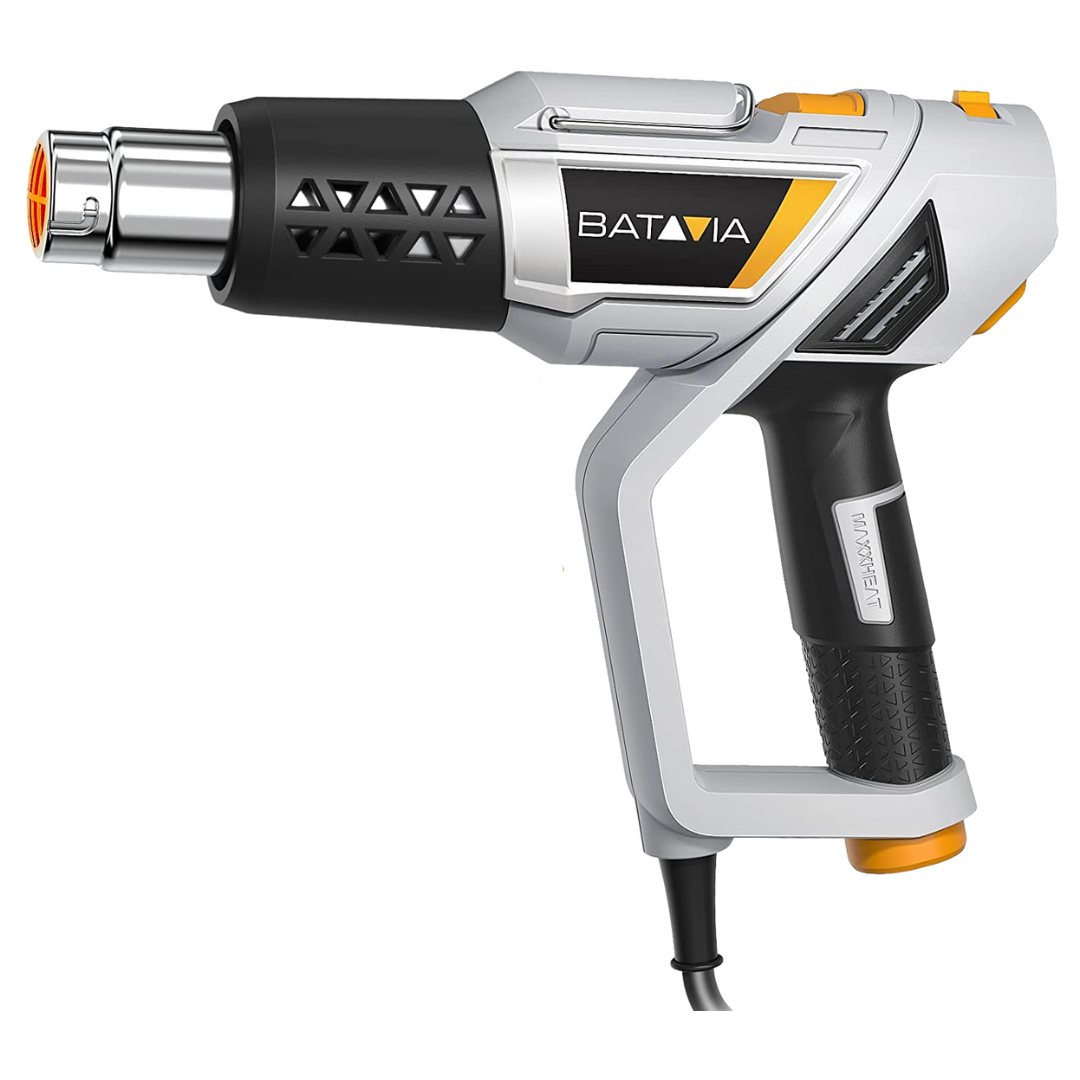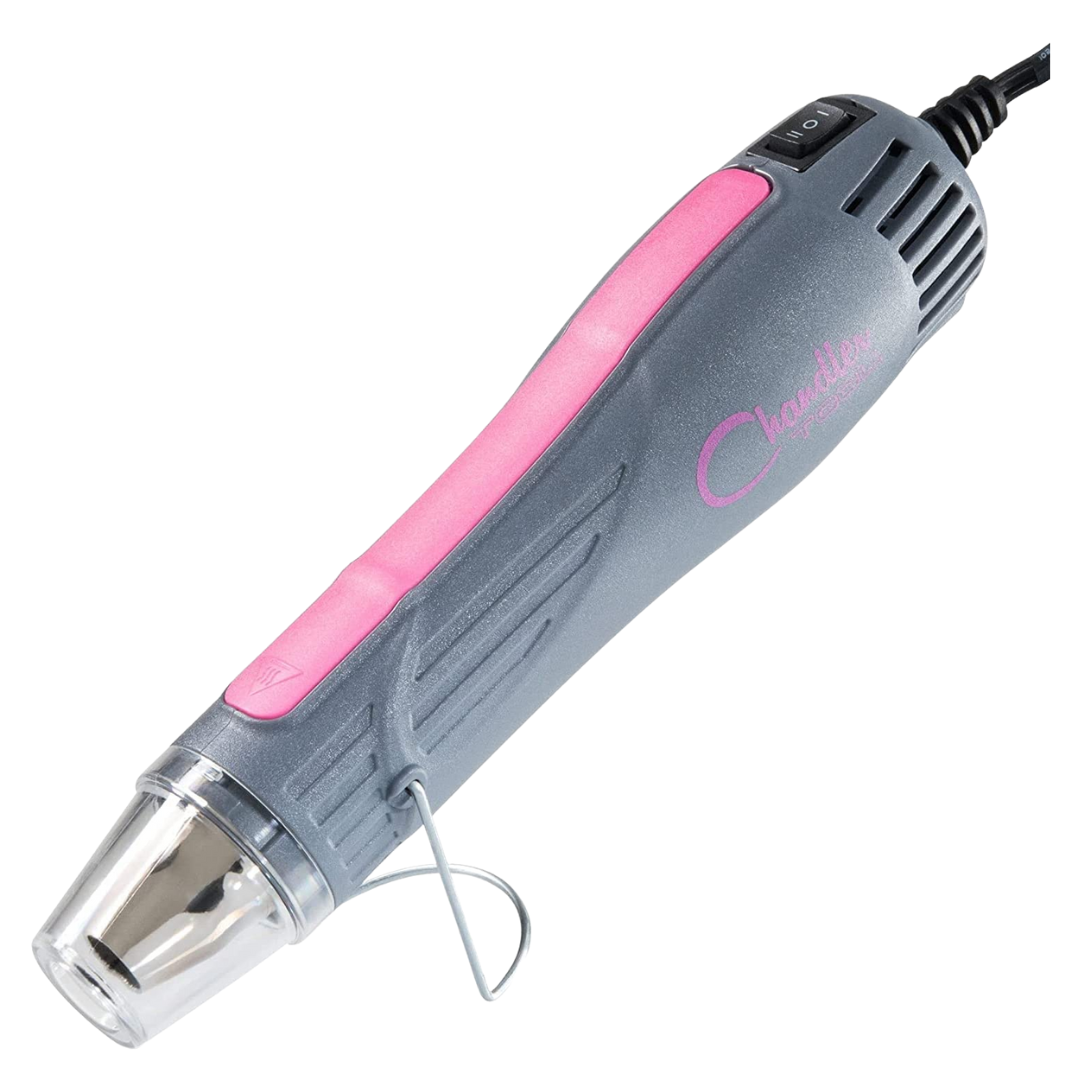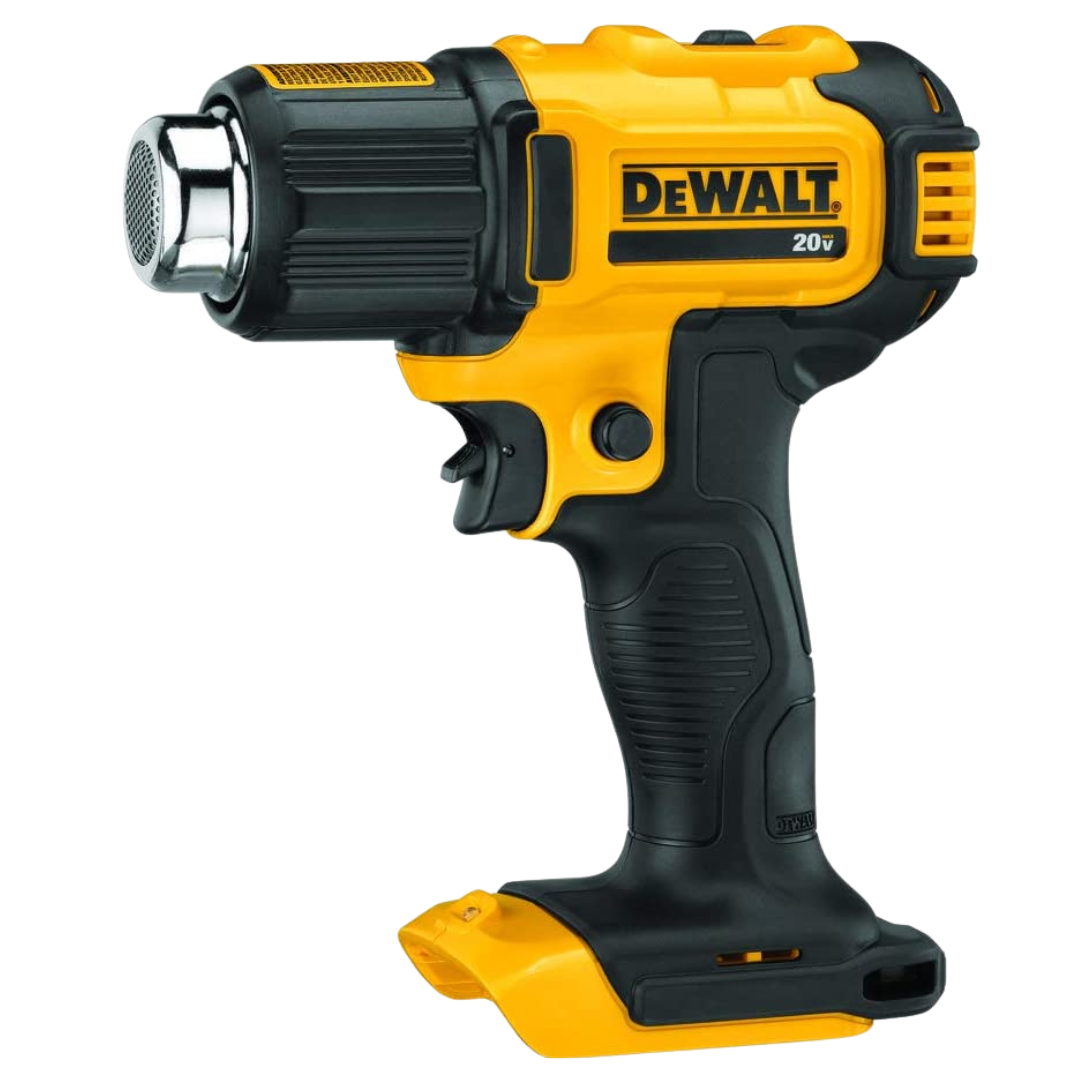We may be compensated if you purchase through links on our website. Our team is committed to delivering honest, objective, and independent reviews on home products and services.
Whether you’re stripping paint or thawing pipes, a heat gun is a simple yet versatile tool that can handle many tasks. Heat guns produce different levels of heat, and they also vary in air speed, nozzle design, and other important features. To help you sort through the models on the market, the This Old House Team researched the best heat guns on Amazon. Learn more about our top recommendations below and check out our guide to buying tools for more important information on shopping for tools.
Compare Top Heat Guns
| Product | Power | Temperature Settings | Power Source | Dimensions |
|---|---|---|---|---|
| BLACK+DECKER Heat Gun | 1,350 watts | 750–1,000 degrees Fahrenheit | Corded electric | 9.3 x 3 x 9.6 inches |
| Batavia Heat Gun | 1,500 watts | 122–1,112 degrees Fahrenheit | Corded electric | 13.2 x 12.5 x 4.3 inches |
| Chandler Tool Heat Gun | 150–300 watts | 392–572 degrees Fahrenheit | Corded electric | 8.9 x 2.1 x 2.3 inches |
| DEWALT Cordless Heat Gun | 20 volts | Up to 990 degrees Fahrenheit | Battery | 9.1 x 9.1 x 9.1 inches |
| SEEKONE Heat Gun | 1,800 watts | 122–1,112 degrees Fahrenheit | Corded electric | 9.8 x 7.2 x 1.5 inches |
| Product | Power | Temperature Settings | Power Source | Dimensions |
Top 5 Heat Guns
- Best Starter: BLACK+DECKER Heat Gun
- Best Accessories: Batavia Heat Gun
- Best for Crafting: Chandler Tool Heat Gun
- Most Portable: DEWALT Cordless Heat Gun
- Most User-Friendly: SEEKONE Heat Gun
Best Starter: BLACK+DECKER Heat Gun
Key Features
- Power: 1,350 watts
- Two temperature settings: 750-1,000 degrees Fahrenheit
- Power source: corded electric
- 9.3 x 3 x 9.6 inches
What Customers Are Saying
Durability, sturdiness, and versatility were among the callouts for this heat gun in its positive customer reviews. Reviewers also added that the gun felt lightweight and easy to maneuver. Alternatively, many users said that it made a lot of noise as it produced heat, and one user wished that it had more air volume to match the temperature output.
Best Accessories: Batavia Heat Gun
Key Features
- Power: 1,500 watts
- Three temperature settings: 122-1,112 degrees Fahrenheit
- Power source: corded electric
- 13.2 x 12.5 x 4.3 inches
What Customers Are Saying
Most customers thought that this heat gun was easy to use. Many positive reviews also highlighted the protective case that carried the heat gun and its included accessories. However, some customers were frightened when the heat gun started smoking as they turned it on for the first time, even though the manufacturer mentioned that this was a normal reaction to the residual oil.
Best for Crafting: Chandler Tool Heat Gun
Key Features
- Power: 150-300 watts
- Two temperature settings: 392-572 degrees Fahrenheit
- Power source: corded electric
- 8.9 x 2.1 x 2.3 inches
What Customers Are Saying
Positively, customers appreciated the size of this heat gun, which they said was ideal for shrink wrapping, embossing, and other creative activities. They also stated that it was sturdy considering its small, light build. Negatively, there was some confusion around the manufacturer’s instructions regarding whether to keep the protective nozzle cap on or off during and after use.
Most Portable: DEWALT Cordless Heat Gun
Key Features
- Power: 20 volts
- Two temperature settings: up to 990 degrees Fahrenheit
- Power source: cordless
- 9.1 x 9.1 x 9.1 inches
What Customers Are Saying
Many users were impressed with the heat and air output of this heat gun, especially considering its cordless design. Though customers thought that it was convenient for small jobs, they reported that the battery didn’t last for long.
Most User-Friendly: SEEKONE Heat Gun
Key Features
- Power: 1,800 watts
- Variable temperature settings: 120-1,112 degrees Fahrenheit
- Power source: corded electric
- 9.8 x 7.2 x 1.5 inches
What Customers Are Saying
Happy customers were satisfied with the overall performance of this heat gun, both in terms of temperature and air output. They also mentioned that it preheated quickly. However, there was some confusion among a handful of reviewers around the temperature selection of the heat gun. They said that they couldn’t be sure what the specific temperature was.
Buying Guide
A heat gun’s features affect its performance. Here are some specifications to consider as you’re selecting a model for your use.
Wattage
A heat gun’s wattage is a measure of its available power. In general, high-wattage heat guns can discharge air at a higher temperature. For example, one heat gun we researched reaches 1,202 degrees Fahrenheit, while another maxes out at only 572 degrees Fahrenheit. Keep in mind that while a higher-wattage heat gun may provide more heat, it also requires more electrical energy.
Temperature Control
Most heat guns offer multiple temperature settings to help you with various DIY projects. The mechanism for changing the temperature varies, though. For example, your heat gun could have a dial that you turn or a button that you press.
Fan Speed
Some heat guns come with an adjustable fan to control how fast hot air discharges. Speed works in tandem with temperature to provide a customizable heat source. For example, more precise projects, such as heating circuitry, may call for a high-heat, low-speed setting, whereas heating a large wallpapered surface may require a higher fan speed.
Nozzle Type
Many heat guns come with specialized nozzles that help you point the heat toward a specific area. Some of the most popular nozzles include cone nozzles that localize the heat and flat nozzles that spread the heat.
Other Features
Consider whether you want a heat gun with a built-in stand. This stand raises the hot tip of an active heat gun to prevent it from damaging your work surface. Other features worth thinking about include textured or rubberized gripping and overheat protection.
Heat Gun Uses
The heat and portability that a heat gun provides make it worth having on hand. Here are some common projects that you can tackle at home using a heat gun.
Removing Paint From Metal
You can use a heat gun to remove paint from metal. Start the heat gun on the lowest setting. Hold it a few inches away from the metal, moving it back and forth slowly. Once the paint is warm, remove it with a putty knife or paint scraper. Be careful not to use too much heat, though, as excess heat can warp metal.
Removing Wallpaper Borders
You can also use a heat gun to remove a wallpaper border. Use a high heat setting to melt the glue and a scraper to peel the wallpaper back. Keep in mind that this causes unfixable damage to the wallpaper, so don’t do this if you want to reuse it.
Stripping Paint From Wood
Heat guns strip paint from wood by blasting hot air until the paint is loose. The trick is to find the optimal temperature. A heat gun that’s set to too low of a temperature will take too long, while a gun that’s too high will char the wood. It’s best to start low and move up a setting later if you need to.
Thawing Frozen Pipes
Frozen pipes can be a serious problem in the winter if you live in the North or Midwest. Thankfully, heat guns are an effective way to thaw them. On a low setting, slowly and gently aim the heat gun at the pipe. Avoid blasting air at the pipe, as this could damage it.
Loosening Bolts and Screws
Rusty, corroded bolts and screws can be difficult to turn. Heat from a heat gun will cause the metal to expand, making them easier to loosen.
Shrink Wrapping
Some people use hair dryers for shrink wrapping, but a heat gun is actually more effective. Move your heat gun slowly over the shrink wrap. Keep it on a low setting to avoid damage.
Frequently Asked Questions
Can a heat gun melt glass?
High-powered heat guns produce enough heat to melt and mold thin glass. Most heat guns aren’t capable of melting thick glass, however.
Do heat guns require any maintenance?
Heat guns require little maintenance. You really only need to keep the nozzle and heat element free of dust. Consult the instructions manual for any other maintenance information.
Can a heat gun melt solder?
Yes. Most, if not all, heat guns are capable of melting solder. In fact, some people use a heat gun in place of a soldering iron because it uses less electricity and fits in confined spaces.
What’s the difference between a torch, soldering iron, and heat gun?
Knowing how and when to use a torch, heat gun, and soldering iron will make various repairs and projects easier to complete. Propane torches provide powerful heat with a concentrated flame. They’re useful for heating frozen pipes and loosening tight nuts. Soldering tools are designed to solder electrical connections. Heat guns offer the most versatility, working for all of these tasks and more.
Is it safe to strip lead-based paint using a heat gun?
No. Though effective, doing so releases toxins into the air. Sanding lead-based paint also releases toxins into the air, in the form of poisonous dust. To safely strip lead-based paint, wear a respirator mask, and use a gel- or liquid-based paint stripper.
Why Trust The This Old House Team
This Old House has empowered homeowners for more than four decades with top-notch home improvement content in the form of television programs, print media, and digital content on its website and social media platforms. The This Old House Team focuses on creating in-depth product and service review content to help inform your purchasing decision for just about any item or resource that you might need for your home. The This Old House Team has written over 1,000 reviews on products in the home space, from cordless drills to kitchen trash cans, lawn mowers, and dining room decorations.
We recommend products in each review using an intensive research process, spending hours combing through the best available models on Amazon. For a product to make our list of top picks, it must hold a solid sales record on Amazon, have consistently positive customer reviews, and offer unique features, among other factors. After narrowing down our list of recommendations, we conduct additional research and sometimes in-person testing to ensure that the products meet our standards. Once we conclude the research phase, we craft a well-rounded, user-friendly article that includes our recommended products and additional information to help homeowners like you make the right purchase.
To share feedback or ask a question about this article, send a note to our team at reviews@thisoldhousereviews.com.
